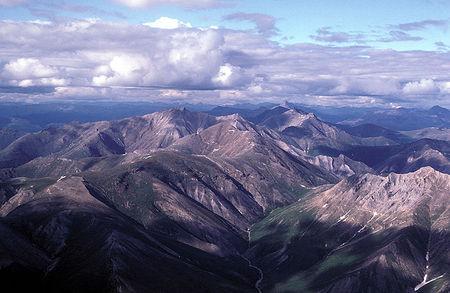1. The Wilderness Act of 1964 stipulated that a tract of land had to be at least a certain size in order to be eligible for consideration as a federally designated wilderness area. What was the stipulated minimum size?
2. True or false? The Wilderness Act of 1964 specifies that hiking and primitive camping shall be permitted in federally designated wilderness areas within national parks.
3. True or false? The National Park Service manages more federally designated wilderness acreage than the U.S. Forest Service does.
4. True or false? Nearly 90 National Park System units contain federally designated wilderness.
5. True or false? Yellowstone National Park has more federally protected wilderness than any other national park in the coterminous United States.
6. True or false? Denali National Park and Preserve has more miles of maintained trails in federally designated wilderness than all of the national parks in the coterminous 48 states put together.
7. True or false? The Appalachian National Scenic Trail traverses more than 20 designated wildernesses.
8. True or false? Glacier Bay National Park and Preserve had federally designated wilderness tracts under management within its borders for almost a decade before any NPS unit in the coterminous United States did.
9. True or false? Point Reyes National Seashore near San Francisco has more than twice as much federally designated wilderness as all of the other National Seashores combined.
10. True or false? There are no designated wildernesses in the National Lakeshores --at least not yet.
Extra Credit Question:
11. Two states west of the Mississippi River have no federally designated wilderness areas. Can you name them?
Super Bonus Question:
12. The largest continuous wilderness complex (uninterrupted federally designated wilderness) in the National Wilderness Preservation System consists of designated wilderness in two adjoining NPS units. Can you name the two National Park System units?
Answers:
(1) The Wilderness Act stipulated that a tract of land otherwise meeting the wilderness criteria cannot be deemed eligible unless it “… has at least five thousand acres of land or is of sufficient size as to make practicable its preservation and use in an unimpaired condition.”
(2) False. Benign or low-impact uses of designated wilderness were not delineated. Hiking and backpacking are not mentioned at all in the Wilderness Act of 1964 (Public Law 88-577).
(3) True. The National Park Service manages 43,383,389 of wilderness, which is just over 40% of the national total of 107,361,680 acres. The Forest Service manages 35,479,099 acres, which is just over 33% of the national total. Give yourself a bonus point if you knew that the Forest Service administers more designated wildernesses (by individual count) that the National Park Service does.
(4) False. Only about half that number contain federally designated wilderness.
(5) False. Yellowstone National Park has no federally designated wilderness.
(6) False. Despite its enormous size, Denali National Park and Preserve has only a few tens of miles of trails.
(7) True. In fact, the “AT” traverses 21 federally designated wildernesses.
(8) False. Idaho’s Craters of the Moon National Monument, for example, had federally designated wilderness acreage by 1970. Glacier Bay was proclaimed a national park in 1925, but had no federally designated wilderness until the ANILCA was passed in 1980.
(9) True. Point Reyes National Seashore has about 25,370 acres of federally designated wilderness. The other three National Seashores with federally designated wilderness – Cumberland Island, Gulf Islands, and Fire Island -- have a combined total of a just over 12,000 acres.
(10) False. Apostle Island National Lakeshore has about 33,500 acres of federally designated wilderness, and Pictured Rocks National Lakeshore now has the 11,740-acre Beaver Basin Wilderness, courtesy of the Omnibus Public Lands Management Act of 2009. Although Sleeping Bear Dunes National Lakeshore has no federally designated wilderness at this time, studies have identified tracts of land at Sleeping Bear Dunes that meet the federal criteria for wilderness designation.
(11) Kansas and Iowa have no federally designated wilderness areas.
(12) The Gates of the Arctic Wilderness (7,167,192 acres) in Gates of the Arctic National Preserve is bordered to the west by the Noatak Wilderness (5,765,427 acres) in Noatak National Preserve. Together these two wilderness areas comprise 12,743,239 acres of uninterrupted designated wilderness. This is the largest such area in the entire Wilderness System, and it’s all on National Park System land.
Grading: 9 or 10 correct, rest on your laurels; 7 or 8 correct, pretty darn good; 6 correct, passable fair; 5 or fewer correct, nothing to brag about.







Comments
Thanks to several readers for bringing to my attention some problems --now fixed -- with the original wording of items #5 and #6. The salient facts are these: Yellowstone National Park has no federally designated wilderness, and Denali National Park & Preserve has very few miles of maintained trails.
Bob --
Once again, another great quiz. Me, I'm just proud of getting the Gates of the Arctic-Noatak question right !
And, as always from you guys, a great photo, too.
Bob--
I had to get out a map and look at all the states west of the Mississippi before I got #11 right. I missed #3. I thought the USFS has more designated wilderness acres than does the NPS. Good question! Hard quiz.
Rick Smith